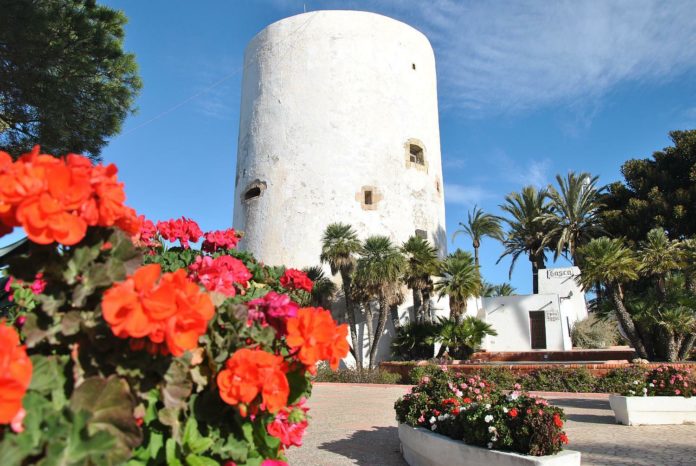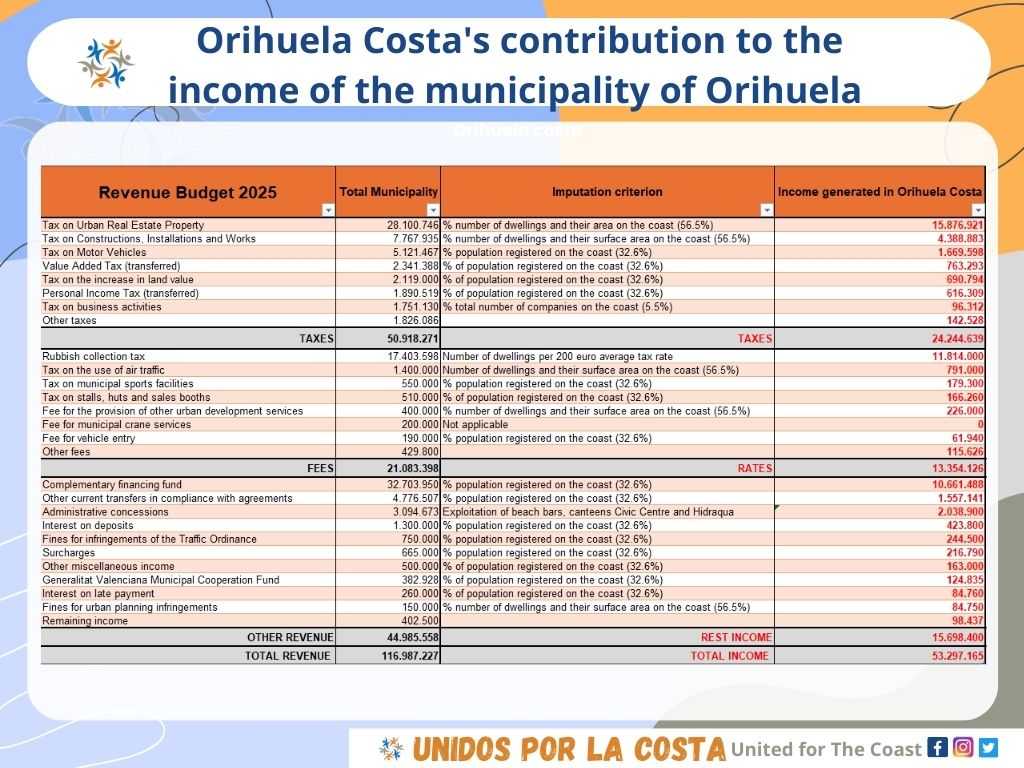
Orihuela Costa contributes 15 million euros more to the municipal budget than it receives in services and infrastructure. This persistent underfunding leads to significant deficiencies, which become more evident year after year.
Of the 117 million euros in revenue the municipality collects, 45.6% (53.3 million euros) originates from the coast. When municipal tax revenue is included, this percentage increases to 63%, amounting to 13 million euros out of a total of 21 million. Meanwhile, only 33% (38 million euros) of the total municipal expenditure is allocated to the coast.
This imbalance of approximately 15 million euros results in inadequate funding for essential services such as Education, Social Welfare, Festivities, and Sports, according to an analysis conducted by the residents’ association Unidos por la Costa.
The association reviewed over 1,200 income and expenditure items in the new budget.
In their view, this shortfall should be addressed annually to improve basic services and coastal infrastructure until a fair budget allocation is achieved.
Regarding investments outlined in the 2024 budget and incorporated into the 2025 plan, 12.6 million euros—only 30.7% of the total 41 million euros—are allocated to the coast. This figure, the association argues, is far below what is required to address the region’s historical infrastructure deficit.
GROWING CALLS FOR SEGREGATION
An increasing number of residents are advocating for Orihuela Costa’s segregation as a solution to the severe deficiencies in services and infrastructure. In the last municipal elections, a pro-independence party (PIOC) received the majority of votes from coastal residents who participated, though voter turnout remained low relative to the eligible population.
The growing support for segregation raises the question of whether such a move would be financially viable under current local government legislation. Unidos por la Costa asserts that the revenue generated by the coast is sufficient to sustain decentralized management, ensuring greater autonomy and recognition of its identity.
However, concerns remain about whether Orihuela’s urban centre could withstand segregation. “For years, its budget has been inflated by revenue from the coast, yet it still suffers from numerous shortcomings, along with many neglected districts across the municipality,” the association states.
Additionally, Orihuela Costa’s population continues to grow, unlike the urban centre’s, further widening the funding gap. The discrepancy between the registered and actual population exacerbates the issue, making the underfunding even more pronounced.

Image courtesy: Unidos por la Costa
NEED FOR ECONOMIC DECENTRALIZATION
Orihuela’s municipality consists of three administratively distinct areas: the urban core, the districts, and the coastal region. Each has unique demographic, social, and economic characteristics, with the coast experiencing a significant floating population due to residential tourism. These differences result in varied needs for income, expenses, and investments.
Unidos por la Costa states that economic decentralization would allow for individualized budget management for each area, enabling strategic spending and investment where it is most needed. The current poor state of basic services and infrastructure, they argue, reflects a spending strategy not based on objective data.
To address these issues, they insist on the necessity of decentralized, professional management, carried out by City Council staff from the coast—people who truly understand local priorities, needs, and shortcomings.
This approach, they argue, would ensure that tax revenue generated by the coast is reinvested effectively, leading to tangible improvements in services and infrastructure.




